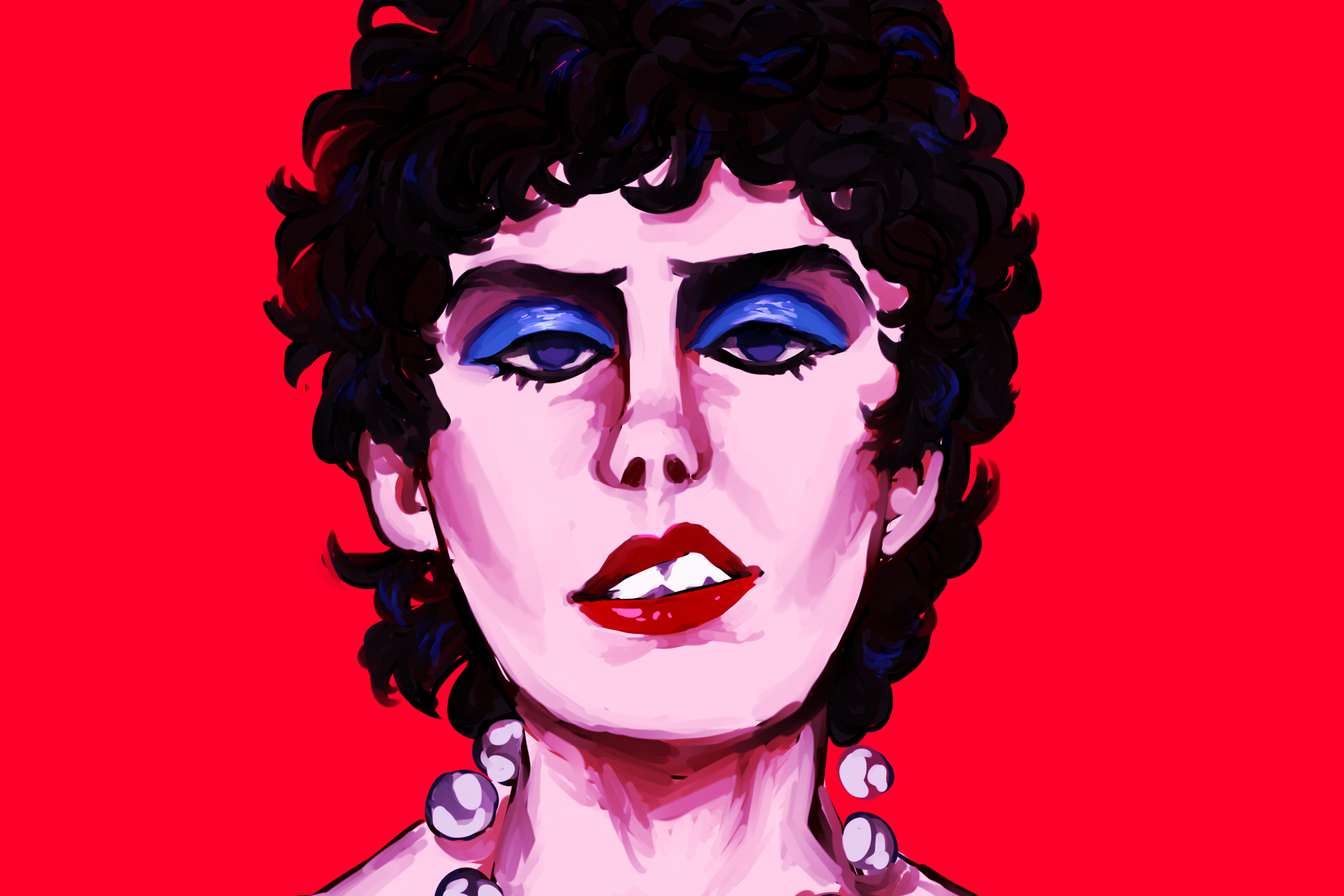When “The Rocky Horror Picture Show” came out 44 years ago, it was groundbreaking on several fronts. The movie is a musical, a science-fiction flick and a parody of a B-grade horror film, all at the same time. Most importantly, it was one of the first films with an overtly gender-nonconforming, queer main character.
Even though it was released in 1975, the film has lived on in midnight showings across the country to this day. The immortality of “The Rocky Horror Picture Show” can be attributed to the viewer culture surrounding it: audience participation, the props (otherwise known as the survival kit) and the shadow cast that dresses up and acts out the movie right in front of the screen. The movie’s longevity has revealed how problematic its content is in today’s society and raises the question if it should still be playing at all.
“The Rocky Horror Picture Show” begins with a newly engaged couple, Brad and Janet, who are meant to symbolize innocence. On a stormy night, Brad and Janet get stranded with a flat tire and must seek shelter in the only nearby building: a castle. Inside the castle, they become acquainted with Dr. Frank-N-Furter, a self-proclaimed “sweet transvestite” who is an alien from the planet Transexual in the galaxy of Transylvania. Throughout the film, Dr. Frank-N-Furter corrupts the young couple by exposing them to murder, premarital sex and his living sex doll, Rocky.
Dr. Frank-N-Furter is constructed of queer stereotypes that were applicable in 1975 and certainly are still used against the queer community today. He is hypersexualized and incredibly campy. Despite this, Frank-N-Furter is still a model of unapologetic gender nonconformity as well as sexual fluidity. In the end, however, his actions keep him from being a good representation of the trans community.
Frank-N-Furter embodies the hurtful stereotype that transgender individuals are sexual predators. He coerces Janet and Brad individually to have sex with him, even after they both initially resisted. Worst of all, Frank-N-Furter creates Rocky, a Frankenstein-esque sex slave. After his birth, Rocky is immediately brought to bed by Frank-N-Furter. Afterward, Rocky is literally chained to the same bed to wait until the next time Frank-N-Furter wants to use him for sex.
This stereotype is particularly harmful today, as trans and other gender-nonconforming people are trying to gain traction regarding anti-discriminatory policies. Specifically, bathroom bills, which determine if transgender individuals can have access to sex-segregated public facilities, have been circulating the last few years.
Many who want to exclude transgender people’s access rely on the narrative that transgender individuals are sexual predators who may use this access to attack women and children. Clearly, Dr. Frank-N-Furter only perpetuates this stereotype at a time when it is critical to show legislature that this is not the case.
Outside of his sexuality, Dr. Frank-N-Furter has many other problematic characteristics that add to his role as a predator. Pretty early in the movie, Frank-N-Furter brutally murders Eddie, a man he kidnapped out of sexual desire, in front of Brad and Janet. What’s worse is when he serves them Eddie’s corpse for dinner as meatloaf.
Frank-N-Furter’s alien origin is also troublesome. By being from the planet of Transexual, it’s easy to see an underlying, hurtful message that trans and gender-nonconforming people are other-worldly. As one of the most famous gender-nonconforming characters in cinema history, it’s understandable why many queer folk do not want Frank-N-Furter representing their community.
Another consequence of “The Rocky Horror Picture Show” surviving until now is that it uses language that is considered offensive in the present day. One of the major anthems of the movie is “Sweet Transvestite.”
At the time of the movie’s release, transvestite was a word used by the LGBTQ+ community to describe a transgender person before they had completed their transition, but today, it is inappropriate language to use for transgender people. The term also refers to men who dress femininely for sexual pleasure, which is vastly different from someone who is transgender.
In the 2016 Fox remake “The Rocky Horror Picture Show: Let’s Do the Time Warp Again,” Laverne Cox had to confront the issues with this language head on. She worked with director Kenny Ortega and made the decision to keep the lyrics the same. She commented, “Historically, the terms have changed [and] it doesn’t mean the same thing today that it meant in the 70s … It’s not appropriate to refer to trans people as a transvestite January 7, 2026, but it is [used here as] the character in that specific moment in history.”
To be sure, “The Rocky Horror Picture Show” has contributed greatly to the LGBTQ+ community by giving them a voice in cinema. Flaws aside, Frank-N-Furter is a fun character to watch, and he was one of the first queer lead characters to hit the theaters. So many individuals have testified that “The Rocky Horror Picture Show” allowed them to start understanding and embracing their own sexuality.
Midnight screenings of “The Rocky Horror Picture Show” are a place of refuge for queer youth that have not come out yet. Those not accepted by their families or friends often turn to “The Rocky Horror Picture Show” cult as a second family. All of these reasons show why this movie has stayed special to so many people for so long.
That being said, it is okay to love a problematic favorite so long as you acknowledge the flaws within it and the communities that may be hurt by those flaws. There is no need to phase out “The Rocky Horror Picture Show” so long as it is viewed with a grain of salt. The flaws of the movie have stood out only because it is the longest-running movie to date; the original film did not and cannot change, while the society it was released to has. Today’s viewers should follow Cox’s example and channel the historical context behind the movie in order to truly enjoy it in spite of its issues.
In 2019, there are plenty of characters that better represent the trans community than Dr. Frank-N-Furter, so people should use the character and “The Rocky Horror Picture Show” as a mark of progress for the community and society as a whole, and this progress is made most meaningful when viewers, fans and performers are able to acknowledge the problems within “The Rocky Horror Picture Show.”
















